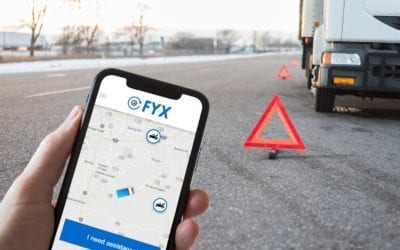The Top 4 Challenges for Motor Carriers in the COVID-19 Pandemic Era (Fall 2020)

Over the last few months, the coronavirus pandemic has added layers of complexity to everything from daily operations to business planning and forecasting for motor carriers. Changes in consumer buying behavior caused significant freight imbalances – with March and April purchasing focused on food and beverages while in May and June it was building materials and garden equipment. All this amid various phases of lockdown region-to-region and state-to-state.
As states continue to re-open, the truckload freight market has begun to show early signs of recovery. Still, the recovery remains uneven, with states like New York, Massachusetts and Connecticut seeing economic activity return, while other areas are forced to take a step back from re-opening plans.
These ever-changing state restrictions and consumer behaviors have had direct and indirect impact on the trucking community. Here are a few considerations for motor carriers and their truckers as they navigate the summer and fall of 2020.
1. Increased traffic in metropolitan areas and country highways
Traffic in some parts of the country is returning to normal – but with a shift. According to the New York City Department of Transportation, traffic on Manhattan’s bridges and tunnels was only down about 18% in July compared to this time last year. That’s up significantly from early-April when traffic was about 60% below average. At the same time, however, subway use still remains down by nearly 80% while ridership on busses is down by about 50%. With driving rebounding faster than public transportation combined with the potential for more people to opt for car travel when commuting – metropolitan areas run the risk of becoming more congested than ever.
For those who have been home since mid-March, COVID-19 has altered vacation travel plans as well. A recent article by McKinsey & Company, Consumer sentiment and behavior continue to reflect the uncertainty of the COVID-19 crisis, reported that fewer than 20% of US residents surveyed said they planned to fly in the near future. Between 20% and 40% of those surveyed said they would not travel by car more than two hours from home. AAA statistics confirm this – predicting that while summer travel will be down 15% overall this year, road trips are expected to be down by only about 3%. That means truckers will be sharing the road with a lot more drivers, especially considering the empty highways over last few months in much of the country.
2. Different state restrictions and reopening plans across the U.S.
Most states have digital signage on major roadways that post what phase of re-opening they are in and how to get more information, typically on state government websites. That can be cumbersome for motor carriers with routes that pass through several states. The New York Times recently published travel restrictions and requirements by state, and truckers or owners can sign up for the paper’s Travel Dispatch newsletter. Although these guidelines are generally for visitors, it’s good to understand in advance where there may be more or less traffic as well as limited access to rest areas, restaurants and motels if reopening is delayed or stepped back.
3. Prolonged infrastructure projects
A July report released by the American Road and Transportation Builders Association (ARTBA) states that transportation projects worth billions of dollars are being delayed or cancelled across the country. This is due primarily to spending cuts, with intended funding having been diverted from infrastructure geared toward roads, transit and airports to handle the pandemic. Essential repairs are still ongoing, however. While the number of work zones may not necessarily increase as construction gets underway on critical infrastructure, it is expected that projects will take longer as crews follow COVID-19 safety protocols.
4. Personal safety of truck drivers
Of course, the personal safety of drivers and their families is foremost to keep business moving forward for motor carriers. That’s why you may want to encourage drivers to create (or you provide, if possible) a ‘COVID-19 Kit’ based on CDC guidelines. This would include:
- A few masks or face-coverings
- Travel laundry soap for cloth masks/face-coverings
- Hand sanitizer for hands and credit cards
- Disinfectant wipes for cleaning steering wheels, door handles and other high touch areas
- Alcohol wipes for cell phones and tablet screens
- A thermometer
As reopening slows in parts of the country, it’s also a good idea for drivers to stock up on extra water, fresh food or protein bars in case stopping is not an option. You can provide more information to them by sharing our blog Tips for Truckers On the Road – Staying Informed About COVID-19 (Coronavirus).
For more information, please contact FYX: 800-888-1001 | sales @fyxfleet.com

GET STARTED WITH FYX
RECENT POSTS
Tips for Truckers On The Road – Staying Informed About COVID-19 (Coronavirus)
In this unprecedented pandemic the world is facing, ‘safety first’ is critical for truck drivers. Today, it is more important than ever to protect not only yourself and your livelihood but also your loved ones and the people you come in contact with.Here are a few...
Full Control of Your Fleet Roadside Assistance With The FYX Software
FYX has recently released a new version of its end-to-end roadside assistance management software. Featuring a wide array of incident management tools, this innovative technology makes it easier than ever for fleet managers to work through incidents while maintaining...
FYX Driver – The Ultimate Roadside Assistance Mobile App For Truck Drivers
Truck breakdowns are inevitable. Even perfectly maintained vehicles experience malfunctions, often in less than ideal locations, on rural highways, miles away from repair shops. When stuck on the side of the road, truck drivers must face severe weather conditions,...




